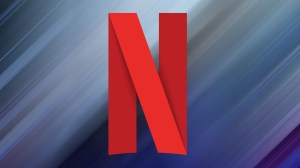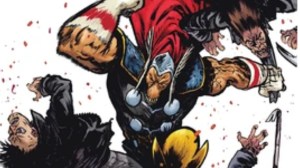
It was recently announced that DC Comics would be shuttering its Vertigo Comics imprint, after more than 25 years of publication, as part of a rebranding effort within the company. While we had recently published a sales analysis showing how the Vertigo line was uncompetitive with similar brands at DC Comics and Image Comics as a whole, this is still likely to have a notable impact on creator-owned comics in the direct market. The emphasis on brands like Jinxworld and Sandman in that piece was because Vertigo was part of the “Big Two,” Marvel and DC, which together dominate roughly 70% of all dollars and units in the direct market. Its closure means that dominant portion of the market will be without a dedicated brand for non-superhero or creator-owned comics. That raises a really big question: what is the state of creator-owned comics in the direct market?
Videos by ComicBook.com
We decided to seek out the largest direct market publishers who are still dedicated to publishing creator-owned comics (i.e. any original idea in which creators own a substantial portion of the series) in some form. With Image Comics hovering just below 10% of all dollars and units, these publishers are essentially the B-team of monthly direct market sales, but the A-team for any artists seeking to put new ideas in comic book stores, and will be essential to determining how many of those ideas ever find an audience.
The B-Team
In order to get a clearer sense of the creator-owned market, we established some criteria for what publishers and series should be considered. First, all comics had to feature original concepts, meaning no sequels or links to existing intellectual property. Second, they had to be creator-led, meaning creators both owned a significant (i.e. > 25%) portion of the concept and appeared to have significant creative control over the story. Third, no “big name” creators could be attached; while that definition will vary, in this case it was intended to exclude creators like Brian Michael Bendis and Neil Gaiman who possess notably outsized influence in the comics industry. Finally, we only included series that either ran to a natural conclusion or were still ongoing after at least six issues. This last metric was designed to avoid counting odd gimmicks, early cancellations, long scheduling delays, and other outliers.
With a clear definition in place, five publishers were identified as possessing the largest average sales for creator-owned comics and being competitive with one another: Image Comics, Dark Horse Comics, Boom! Studios, Aftershock Comics, and IDW Publishing (in order of average sales).
We then created a list of all new creator-owned series launched during the summer and fall seasons of 2018 to calculate and compares sales figures, as these launches would all be recent and have run long enough to offer a clear sense of trends, per our standard analysis method. An exception was made for IDW, which only published three suitable series during this timeframe in order. We also included two series from earlier 2018 in order to represent their creator-oriented Black Crown imprint of comics.
With that criteria in place, data was collected to represent the average sales for the first six issues of each publisher’s new creator-owned series from this timeframe:

A few things are worth noting in this chart. First, Image Comics is obviously the biggest publisher of the set. There are a number of possible reasons for this. They have the highest level of brand recognition and the largest market share, which in turn makes them more likely to attract more readers, more speculators, and more recognizable creators. Size does matter in this scenario and Image has been the biggest publisher of original concepts in comics’ direct market for more than a decade. However, Image Comics also experiences the widest variance between the sales of different titles, as well. Sales of #1 issues ranged between about 11,000 and 28,000 units according to Diamond, with many of the lower-selling series reflecting very similar overall sales to those from other publishers included in this chart.
It’s also worth noting that some publishers’ trend lines don’t continue through issue #5 or #6. This is because most of their creator-owned content ends with issue #4 or #5 (making an extension unreflective of general trends). There will be more on this in a bit.
Without exception, average sales for all of these publishers were still near or below the 10,000 unit mark by issue #2 and continued to fall in familiar patterns. To further explore this trend we charted the average attrition rate (i.e. percent loss of sales) between issues for all five publishers as well.

The attrition rate is incredibly stable between all five publishers for this sort of material, with only Boom! Studios featuring a higher standard attrition rate and departing significantly from the average. We previously found the average attrition for creator-owned comics at the three largest direct market publishers (including Jinxworld, Sandman, Image Comics, and Vertigo) with a stable pattern of: 44%-14%-12%-6%-5%. The overall loss of subsequent sales increases amongst this “B-Team” cohort that only shares Image Comics with the original group, producing a new pattern of: 42%-20%-15%-10%-6%. It appears that, generally speaking, the loss of brand recognition may result in an increasing willingness for store’s to decrease orders of a given series.
Observations on Publishing Strategies
Reviewing this sales data from so many publishers produced a number of specific observations, as well. Without delving into too many specifics, here are some worthwhile notes regarding trends outside of the aggregated numbers already presented.
Image Comics: This publisher featured the most new series being published and, likely as a result, the most variations and delays. Multiple series, including Jook Joint and Dead Rabbit, were cancelled very early in their runs with minimal explanation as to why or whether they would return. They also experienced the greatest variations in sales by far.
Boom! Studios: Boom suffered the highest attrition rates amongst its series with many losing more than 50% of sales after the first issue and more than 20% after the second. It’s difficult to speculate why this might be, however. Boom also appeared to use five issues as a standard length for new creator-owned properties with a majority of its releases concluding at issue #5.
Dark Horse: Dark Horse primarily published comics under its Berger Books imprint (curated by Vertigo Comics founder Karen Berger), although its best-selling title from this cohort, Sword Daughter, was not. Like Boom, they appeared to have a standard expected run for new creator-owned series, but opted for four issues as a standard length.
Aftershock Comics: Aftershock was the second most prolific publisher by far. They released almost as many new series as Image Comics in the same time frame and are the only other publisher focusing the majority of their line around new creator-owned titles. Aftershock reliably continued series that sold well (given their metrics) and consistently allowed the majority of their series to be completed with at least five issues.
IDW Publishing: IDW featured the lowest average sales of this cohort, all of which fell under their creator-owned imprint Black Crown (curated by Shelly Bond, another Vertigo editor). Most series that were ended were provided with 5 or 6 issues to complete their runs.
A Brief Note on Vertigo Comics
Last week, we noted that Vertigo Comics underperformed amongst comparable publishers. However, its content was more similar of the publishers included in this list, with fewer recognizable creators and original ideas. While the expectations may have been increased as a part of DC Comics, it’s clear that the most recent Vertigo relaunch was successful in terms of how effectively it sold the creators and concepts in its own line.

Vertigo Comics was the only publisher in this cohort that was close to reaching similar sales as Image Comics, and its shuttering appeared to remove publisher able to effectively promote creator-owned comics. Creators themselves are likely to note that Vertigo Comics also paid a page rate, while most Image Comics’ deals often provide very little, if any, revenue for creators prior to publication. However, the recent announcement of a new pop-up imprint of horror comics curated by Joe Hill suggests that DC Comics is not done supporting creator-owned titles in the direct market.
The State of Creator-Owned Comics
Considering that these five publishers represent the largest sets of dedicated infrastructure for selling creator-owned comics in the direct markets, it would be an understatement to say that things aren’t great. Image provides a notable boost to the numbers, but even with its inclusion there appears to be a ceiling of about 10,000 sustainable readers, one that only two series managed to crack by issue #6 (Farmhand and Unnatural). While 10,000 is the highest-reasonable goal a creator-owned series could aim for, the average sales after #1 issues are far, far lower.
A weighted average for all of these series shows that most creator-owned titles should expect to sell only about 10,000 copies at their launch and less than 5,000 by issue #3. These steep declines explain why so many publishers opt to end most of their creator-owned series before they even reach issue #6.
When you also consider that these are the largest publishers, the ones most capable of providing a recognizable brand, competent marketing, and other forms of support, the sales situation looks even more grim. The best case scenarios are “not great,” and a brief review of smaller publishers makes it clear that things only get worse further down the list. The direct market isn’t just dominated by superhero comics, it has a very limited audience for most new creator-owned titles. Without having a big name attached or a truly rare amount of luck, it’s almost impossible for new ideas to find more than a few thousand readers at comic book stores today.








